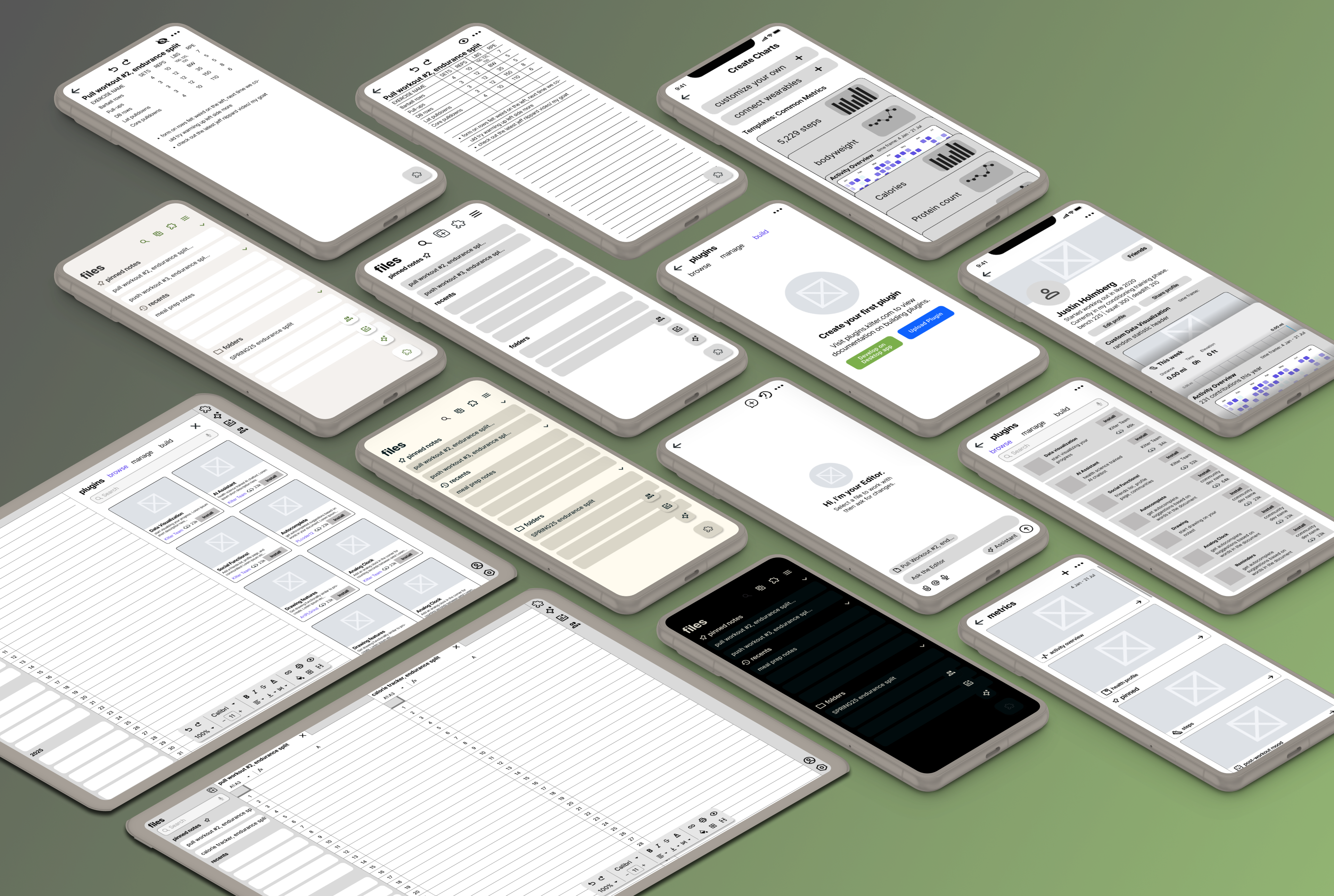USER VALIDATION
Over the semester, I led recurring interviews with 5 seasoned weightlifters. Their feedback validated my hypothesis to design simple and adaptable interfaces.
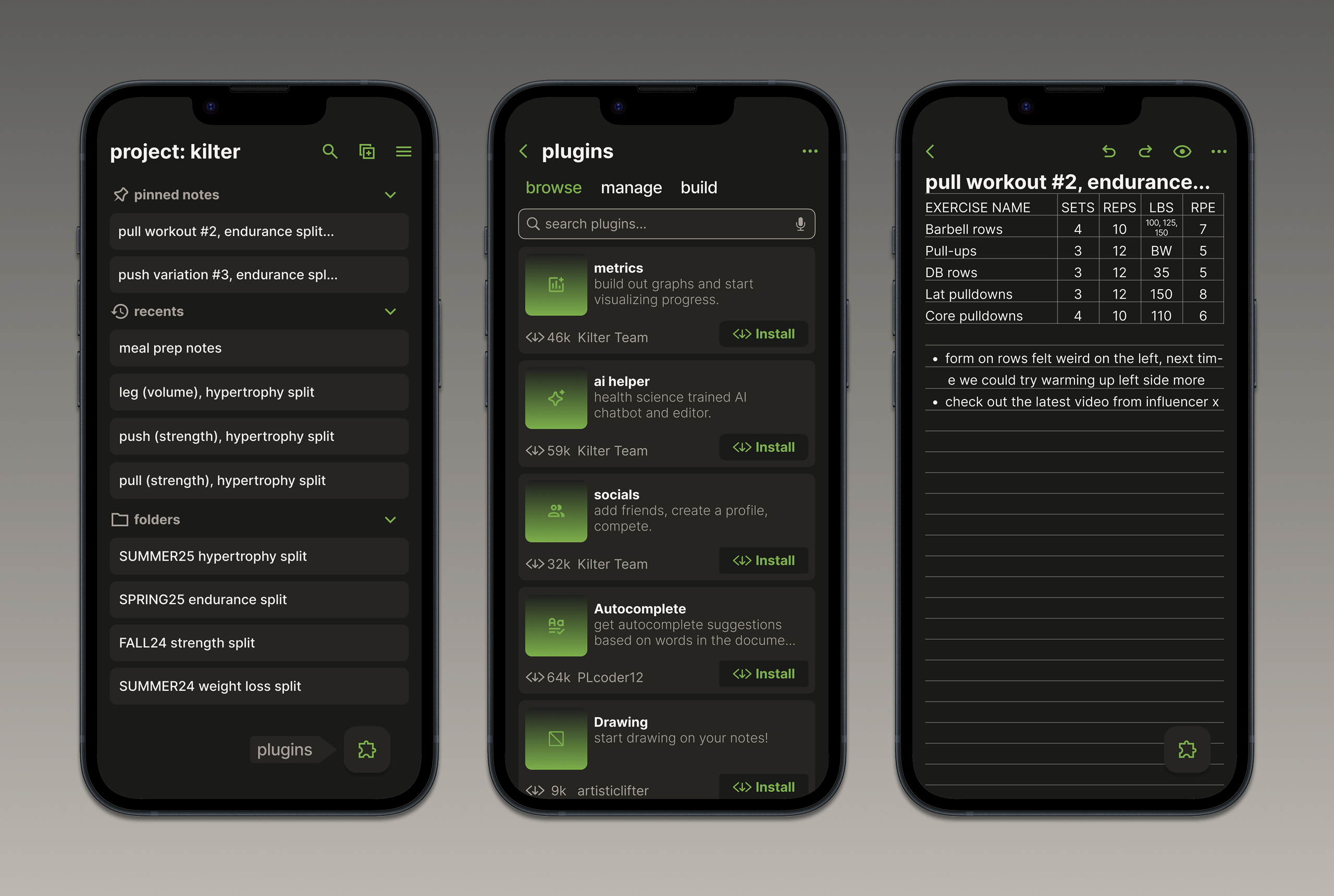
Over the semester, I led recurring interviews with 5 seasoned weightlifters. Their feedback validated my hypothesis to design simple and adaptable interfaces.
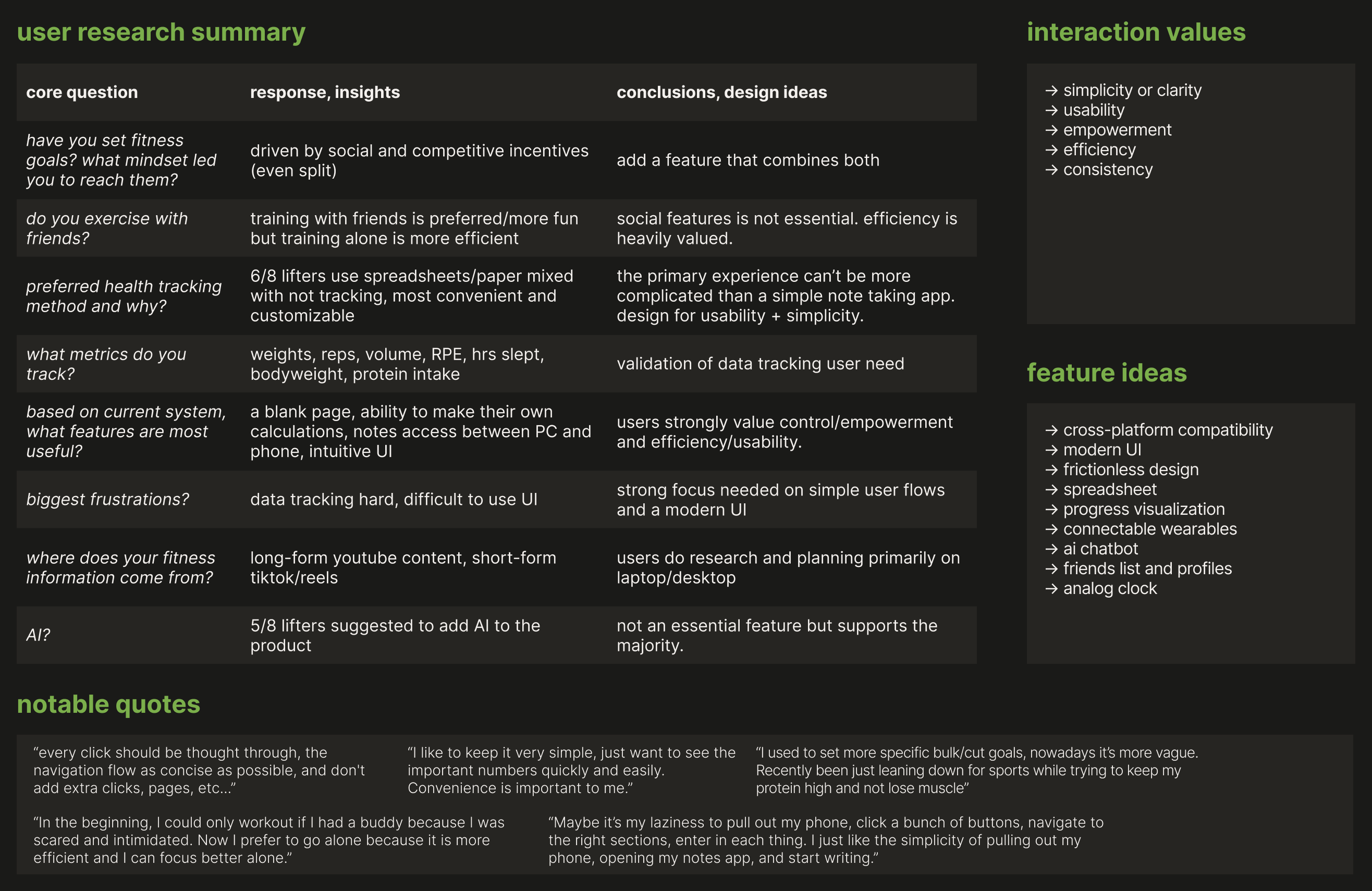
Most interactions happen during workouts, making mobile the priority. As lifters progress, they require less structure and more freedom, often favoring simple note-taking tools over rigid fitness apps. A project: kilter file starts as a single column with no grid lines. Users can add columns to define their own spreadsheet size.
Weightlifters often build routines while referencing multiple mediums. A desktop environment allows them to organize information and structure programs more efficiently compared to mobile. Cross-platform syncing ensures a seamless workflow between planning and execution.
Weightlifting goals are highly individual, much like programming or productivity. Accessed via a floating action button, plugins appear in a separate space. However, their functionality can be integrated into the spreadsheet itself — such as context-specific prompting or generating workouts.
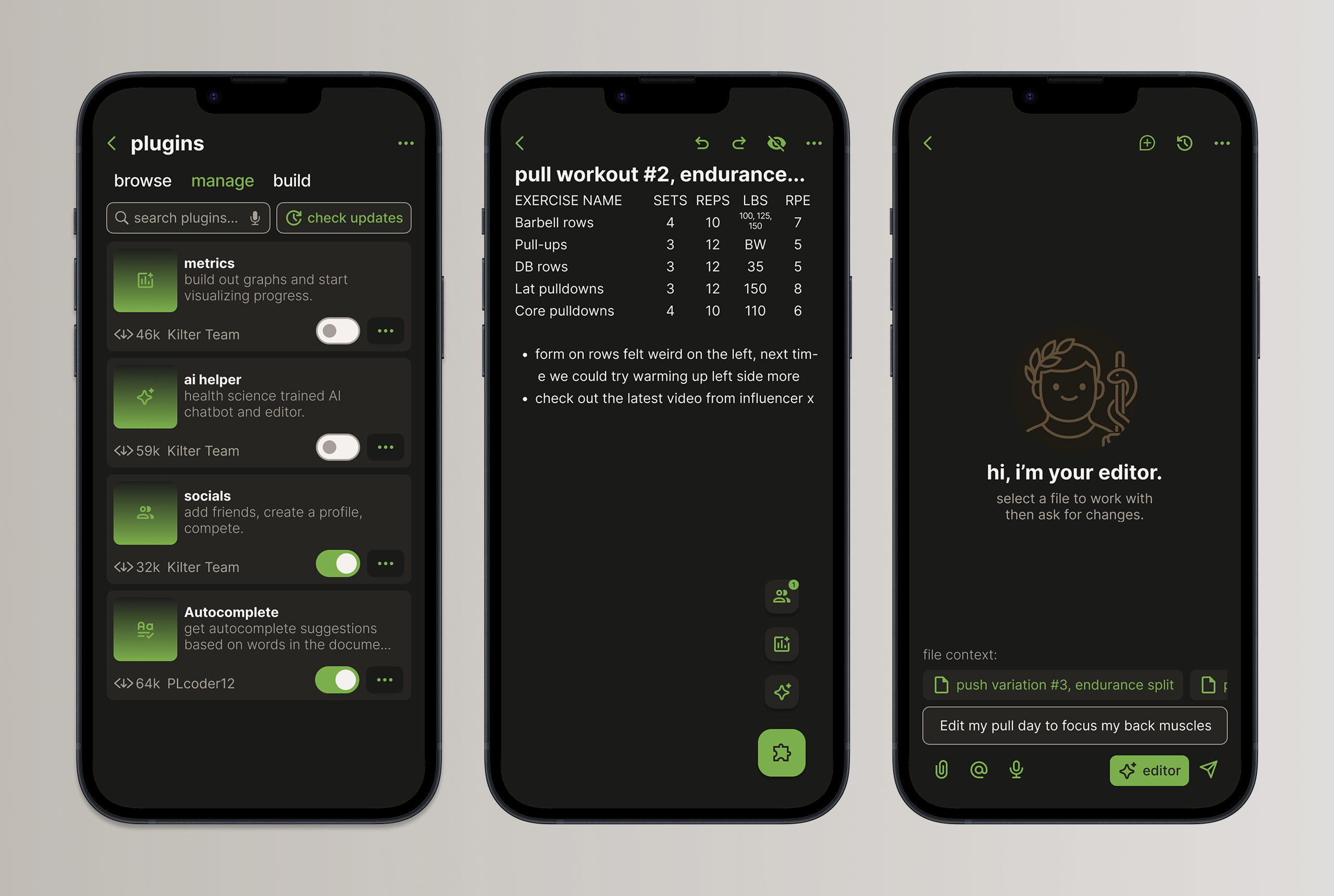
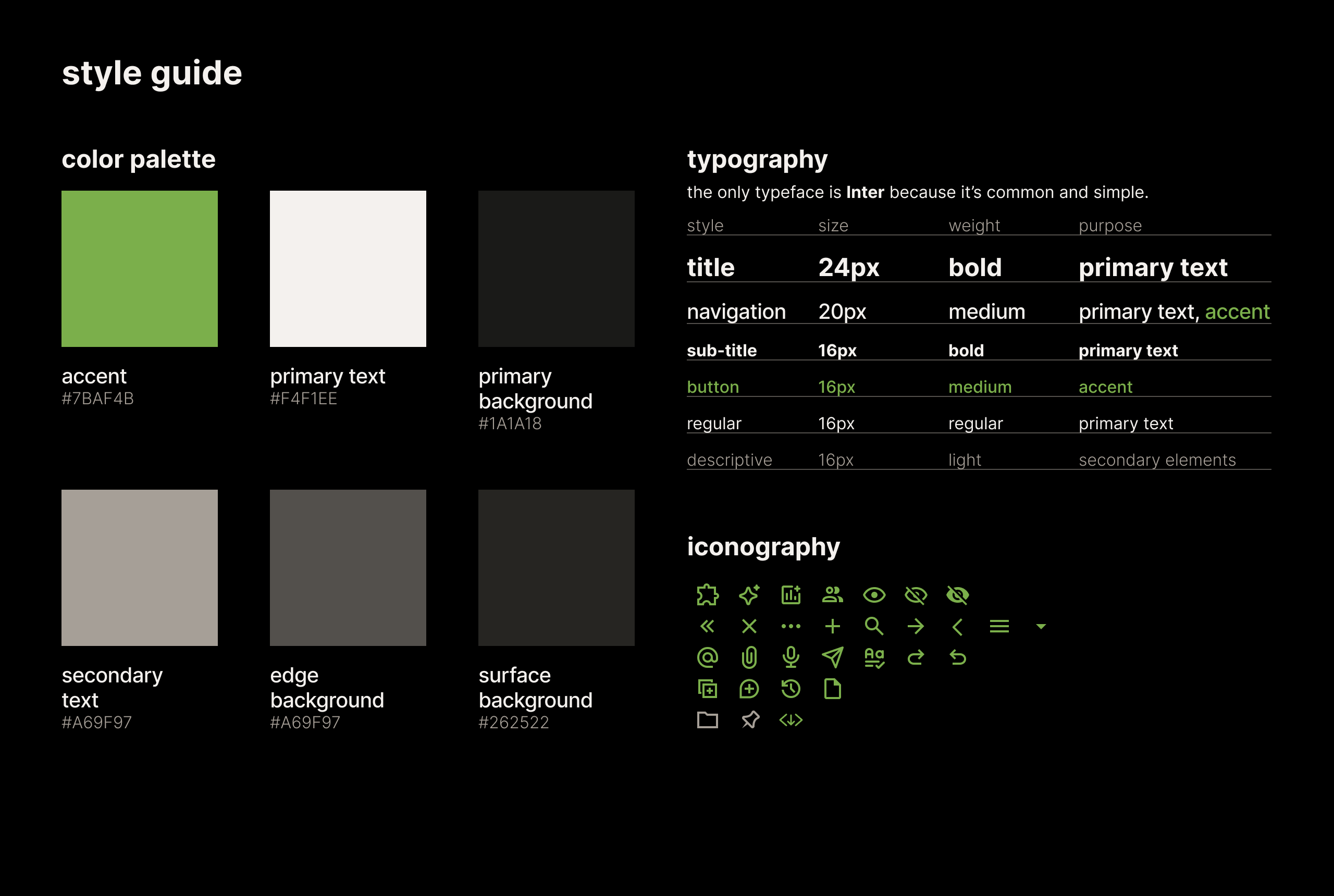
If you're curious, you can explore the Figma file. This project taught me Figma, core UX practices, and the importance of keeping the scope narrow for efficient implementation. It ultimately evolved into a productivity tool that would be too challenging to build with my current programming skills.
